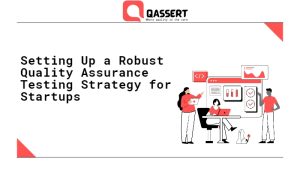A high-performance QA team ensures that your product meets customer expectations and maintains high quality. With the right team structure, clear roles, and essential skills, you can build a QA team that is proactive, adaptable, and collaborative.
In this blog, we’ll guide you through everything you need to know to create a strong QA team that drives success in your software delivery process.
1. Define the Right QA Roles
The first step in building a skilled QA team is defining roles that align with your development lifecycle. Some key QA roles include:
- QA Manager / Lead: Oversees strategy, planning, and coordination. Sets quality benchmarks.
- Manual Testers: Execute functional, UI, and regression testing manually.
- Automation Testers: Build and maintain test automation scripts and frameworks.
- Performance Testers: Focus on system speed, scalability, and reliability.
- Security Testers: Identify vulnerabilities and ensure compliance with security standards.
- SDETs (Software Development Engineers in Test): Blend development and QA skills to build robust test tools and frameworks.
To explore detailed QA roles and their responsibilities, check out this TestRail guide on QA roles.
2. Look for Essential QA Skills
To build an efficient QA team, focus on hiring individuals with these core skills:
- Technical Proficiency: Familiarity with tools like Selenium, Postman, JIRA, Git, Jenkins, etc.
- Test Design Skills: Ability to create effective and reusable test cases.
- Automation Skills: Knowledge of scripting in Java, Python, or JavaScript is a plus.
- Analytical Thinking: Good at finding patterns and identifying bugs.
- Communication: Clear documentation and collaboration with developers and product owners.
- Domain Knowledge: Understanding the business context ensures better testing coverage.
3. Create a Collaborative Team Structure
An effective QA team structure encourages transparency, speed, and scalability.
- Agile QA Pods: Embed QA engineers in each Agile squad to test features early.
- Central QA Team: A shared team that handles automation, performance, and release testing.
- Test Center of Excellence (TCoE): A team that standardizes testing practices across the organization.
You can also follow best practices from the ThoughtWorks high-performance playbook to design effective team structures and improve delivery outcomes.
4. Integrate QA into the DevOps Pipeline
To build a high-performing QA team, integrate QA early into the CI/CD process:
- Shift-left testing: Involve QA in planning and development stages.
- Continuous testing: Automate tests and integrate them into the build pipeline.
- Monitoring and feedback: Use tools like Grafana or Splunk for performance metrics.
This approach ensures bugs are found early, reducing time and cost.
5. Focus on Continuous Learning and Growth
Encourage your team to upskill regularly through:
- Online courses and certifications (e.g., ISTQB, Udemy, Coursera)
- QA communities and tech meetups
- Internal knowledge-sharing sessions
- Code reviews and test strategy discussions
This culture of learning keeps your QA team updated with the latest testing trends and tools.
Conclusion
Building a high-performance QA team requires the right mix of people, tools, and processes. With well-defined roles, must-have skills, and a team-oriented structure, you’ll be able to deliver quality software faster and more efficiently.
Invest in your QA team’s growth, promote collaboration, and integrate quality into every stage of your SDLC. Your customers—and your product—will thank you.




